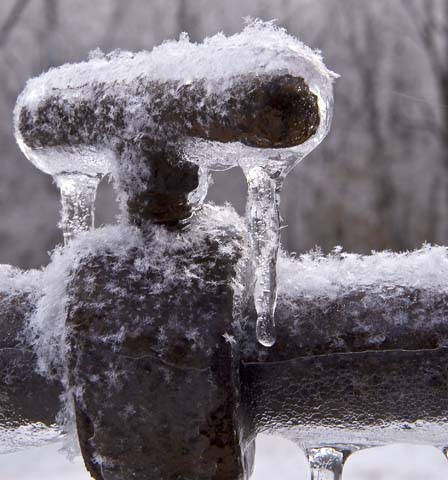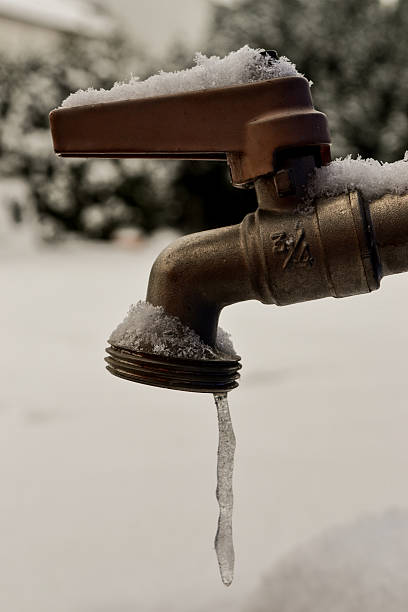How to Defend Your Pipes from Cold Weather: Expert Advice
How to Defend Your Pipes from Cold Weather: Expert Advice
Blog Article
Right here underneath you will discover lots of wonderful help and advice about Helpful Tips to Prevent Frozen Pipes this Winter.

Cold weather can damage your pipes, especially by freezing pipes. Right here's how to stop it from happening and what to do if it does.
Intro
As temperatures decrease, the risk of icy pipelines boosts, potentially causing costly repair services and water damages. Understanding exactly how to prevent frozen pipelines is crucial for property owners in cool environments.
Prevention Tips
Shielding vulnerable pipes
Wrap pipes in insulation sleeves or make use of warmth tape to protect them from freezing temperatures. Focus on pipes in unheated or outside locations of the home.
Home heating strategies
Keep interior spaces sufficiently heated up, particularly locations with plumbing. Open cabinet doors to allow warm air to circulate around pipelines under sinks.
Just how to determine frozen pipes
Look for decreased water circulation from taps, unusual odors or noises from pipelines, and noticeable frost on subjected pipes.
Long-Term Solutions
Architectural modifications
Consider rerouting pipelines away from exterior wall surfaces or unheated areas. Include added insulation to attics, cellars, and crawl spaces.
Updating insulation
Invest in premium insulation for pipes, attics, and wall surfaces. Proper insulation aids preserve consistent temperature levels and lowers the danger of frozen pipes.
Safeguarding Exterior Plumbing
Yard hose pipes and outdoor taps
Separate and drain garden pipes prior to winter months. Set up frost-proof spigots or cover outdoor taps with insulated caps.
Understanding Icy Pipes
What causes pipelines to freeze?
Pipelines freeze when revealed to temperatures below 32 ° F (0 ° C) for expanded durations. As water inside the pipelines ices up, it increases, putting pressure on the pipeline walls and possibly triggering them to rupture.
Threats and damages
Icy pipes can lead to supply of water disruptions, residential property damages, and expensive repairs. Burst pipes can flooding homes and trigger comprehensive architectural damages.
Indications of Frozen Pipes
Recognizing frozen pipelines early can prevent them from breaking.
What to Do If Your Pipes Freeze
Immediate activities to take
If you believe icy pipes, maintain taps open up to soothe stress as the ice thaws. Utilize a hairdryer or towels soaked in warm water to thaw pipelines slowly.
Final thought
Protecting against frozen pipelines requires aggressive procedures and fast responses. By comprehending the causes, indicators, and safety nets, property owners can protect their plumbing throughout cold weather.
6 Proven Ways to Prevent Frozen Pipes and Protect Your Home
Disconnect and Drain Garden Hoses
Before winter arrives, start by disconnecting your garden hoses and draining any remaining water. Close the shut-off valves that supply outdoor hose bibs and leave the outdoor faucet open to allow any residual water to drain. For extra protection, consider using faucet covers throughout the colder months. It’s also important to drain water from any sprinkler supply lines following the manufacturer’s directions.
Insulate Exposed Pipes
Insulating your pipes is an effective way to prevent freezing. Pipe insulation is readily available at home improvement stores and is relatively inexpensive. Pay close attention to pipes in unheated areas such as the attic, basement, crawl spaces, or garage. Apply foam insulation generously to create a buffer against the cold. You can also wrap your pipes in heat tape or thermostat-controlled heat cables for added warmth.
Seal Air Leaks
Inspect your home for any cracks or openings that could let in cold air. Seal any holes around the piping in interior or exterior walls, as well as the sill plates where your home rests on its foundation. Additionally, make sure to keep your garage door closed unless you’re entering or exiting. Leaving it open creates a significant air leak that can lead to frozen pipes.
Allow Warm Air Circulation
During cold snaps, it’s essential to allow warm air to circulate evenly throughout your home. Leave interior doors ajar to promote better airflow. Open kitchen and bathroom cabinets to help distribute heat consistently around the rooms. If you have small children or pets, be sure to remove any household chemicals or potentially harmful cleaners from open cabinets for safety.
Let Faucets Drip
A small trickle of water can make a big difference in preventing ice formation inside your pipes. When temperatures drop significantly, start a drip of water from all faucets served by exposed pipes. This continuous flow helps prevent the water from freezing. Additionally, running a few faucets slightly can relieve pressure inside the pipes, reducing the chances of a rupture if the water inside does freeze.
https://choateshvac.com/6-proven-ways-to-prevent-frozen-pipes-and-protect-your-home/

Do you really like reading about 6 Ways to Prevent Frozen Pipes? Create feedback down the page. We will be happy to see your opinions about this post. In hopes that you come back again in the future. Enjoyed reading our content? Please quickly share it. Let somebody else locate it. Thanks so much for going through it.
Visit Our Website Report this page